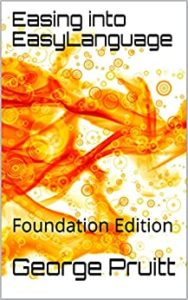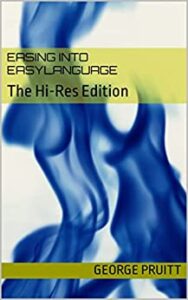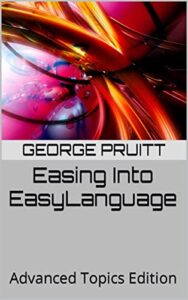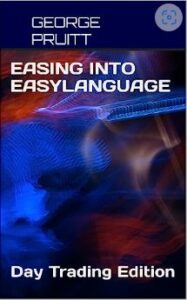Advanced Edition is now Available

The last book in the Easing Into EasyLanguage Series has finally been put to bed. Unlike the first two books in the series, where the major focus and objective was to introduce basic programming ideas to help get new EasyLanguages users up to speed, this edition introduces more Advanced topics and the code to develop and program them.
Buy this book to learn how to overcome the obstacles that may be holding you back from developing your ideal Analysis Technique. This book could be thousands of pages long because the number of topics could be infinite. The subjects covered in this edition provide a great cross-section of knowledge that can be used further down the road. The tutorials will cover subjects such as:
- Arrays – single and multiple dimensions
- Functions – creation and communicating via Passed by Value and Passed by Reference
- Finite State Machine – implemented via the Switch-Case programming construct
- String Manipulation – construction and deconstruction of strings using EasyLanguage functions
- Hash Table and Hash Index – a data structure(s) that contains unique addresses of bins that can contain N records
- Using Hash Tables – accessing and storing data related to unique Tokens
- Token Generation – an individual instance of a type of symbol
- Seasonality – in depth analysis of the Ruggiero/Barna and Sheldon Knight Universal Seasonal data
- File Manipulation – creating, deleting and writing to external files
- Using Projects – organizing Analysis Techniques by grouping support functions and code into a single entity
- Text Graphic Objects – extracting text from a chart and storing the object information in arrays for later development into a strategy
- Commitment of Traders Report – TradeStation only (not MultiChart compatible) code. Converting the COT indicator and using the FundValue functionality to develop a trading strategy
- Multiple Time Frame based indicator – use five discrete time frames and pump the data into a single indicator – “traffic stop light” feel
Once you become a programmer, of any language, you must continually work on honing your craft. This book shows you how to use your knowledge as building blocks to complete some really cool and advanced topics.
Take a look at this video:
Discover more from George Pruitt
Subscribe to get the latest posts sent to your email.






Glad you\\’re taking the time to write on some more advance EL subjects. I am getting the book just to support your effort. There are tons of entry level material out there (the old EL) -very little in the intermediate/advance stuff. A detail book on Object-Oriented EL is completely missing… thanks again!